What is it about hummingbirds that make them so fascinating? Is it their small size? After all, they are the smallest bird in the world. Maybe it is their beautiful, color-changing plumage that we love. Or perhaps the sound of their wings as they beat frantically, creating the humming sound that gives them their name.
Here are some other things you may or may not know about our tiny feathered friends:
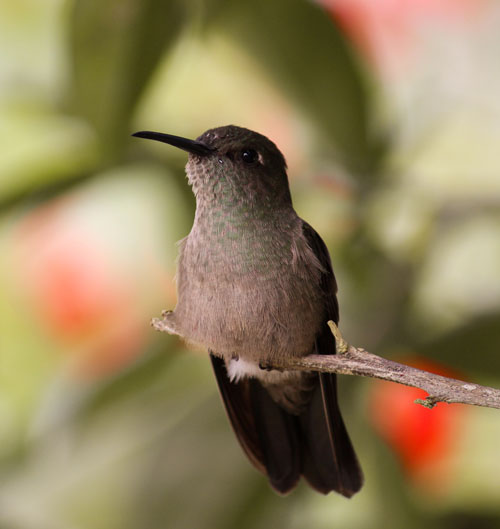
Hummingbirds spend most of their day sitting, so providing places where they can perch will help keep them in your yard
- Depending on the species, hummingbirds beat their wings 12 to 80 times per second.
- They visit up to 2,000 flowers a day.
- Only part of their diet is nectar. They also rely on protein from insects to sustain them.
- They have the highest metabolism of any mammal (except insects) during flight. This extremely high metabolism means that they are in danger of starving if they don’t have food, which is why some hummingbirds can become territorial.
- The need for food and an enlarged hippocampus section of their brain also means that they have an incredible memory. This helps them return to flowers for more nectar again and again.
- Some are migratory but others stay in Tucson year-round.
- While insects find flowers by smell, hummingbirds use their sense of sight. You can plant flowers that don’t produce any scents closer to your home – it will attract the hummingbirds but not bees or other insects.
- Most sounds that a hummingbird makes are actually the wind on their feathers. For some males, this sound is part of the mating ritual.
- They can reach speeds of up to 49 mph when they dive down in midair.
- They are found in nature only in the Western Hemisphere (mostly the Americas).
- To conserve energy, they become torpid at night, which resembles a mini-hibernation.
Whatever the reason, hummingbirds are well-loved, and we are lucky to have 15 different species of hummingbirds that reside in or visit the Tucson area. If you want to attract them to your yard, you’ll need to provide a few things, the first (and most important) being a source of food.
Hummingbird Food and Rest
As mentioned above, hummingbirds need more than nectar to survive. They need protein from the insects that they eat. They also need to conserve their energy because of their incredibly high metabolism, so when they are not feeding, they like to perch. It is estimated that they spend 10-15% of their day feeding and 75-80% sitting. Providing branches or areas where they can rest will encourage them to stick around your yard.
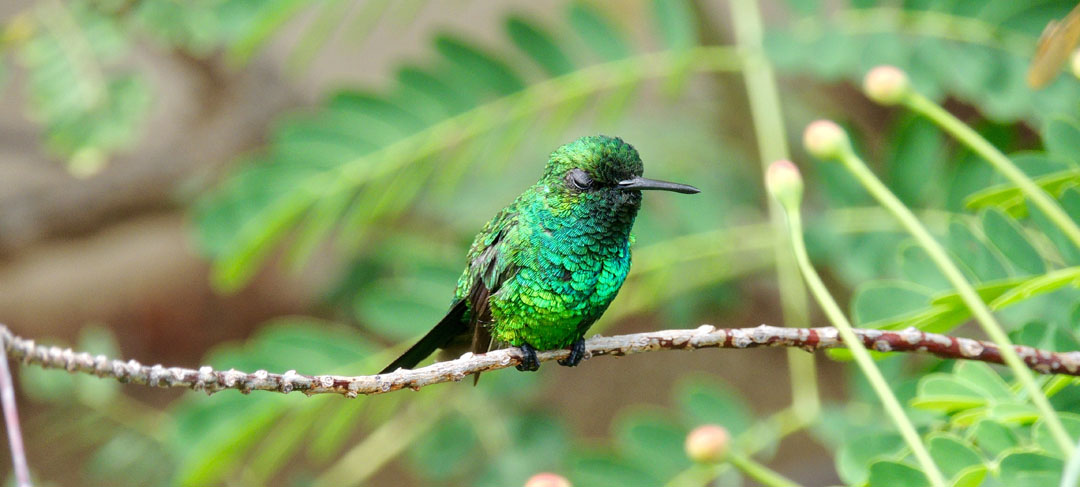
Hummingbirds spend a majority of their day sitting to conserve energy
What Plants do Hummingbirds Like?
Hummingbirds extract nectar from flowers as a source of energy to sustain them. The higher the sugar content of the nectar, the better, as more sugar means more energy for them. Most sources on hummingbirds will point out that hummingbirds are attracted to the color red, and so will choose red or orange flowers over other colors (this is why most hummingbird feeders are red). Many red-colored wildflowers rely on hummingbirds for pollination.
However, the possible preference for red-colored flowers doesn’t mean that they won’t visit and pollinate other colors of flowers, too. We recommend planting a variety of flowers and colors. You might also want to plant a variety of perennials and annuals, plants of different heights, and some shrubs and trees.

Don’t feel like you’re limited to only red or orange flowers to attract hummingbirds
Hummingbirds like flowers that are long and tubular. Why is this? Other kinds of pollinators such as bees and butterflies can only reach pollen in the first part of the flower, but hummingbirds have beaks and tongues that allow them to reach the pollen further back in the flower. These kinds of flowers tend to have more pollen too, so bonus!
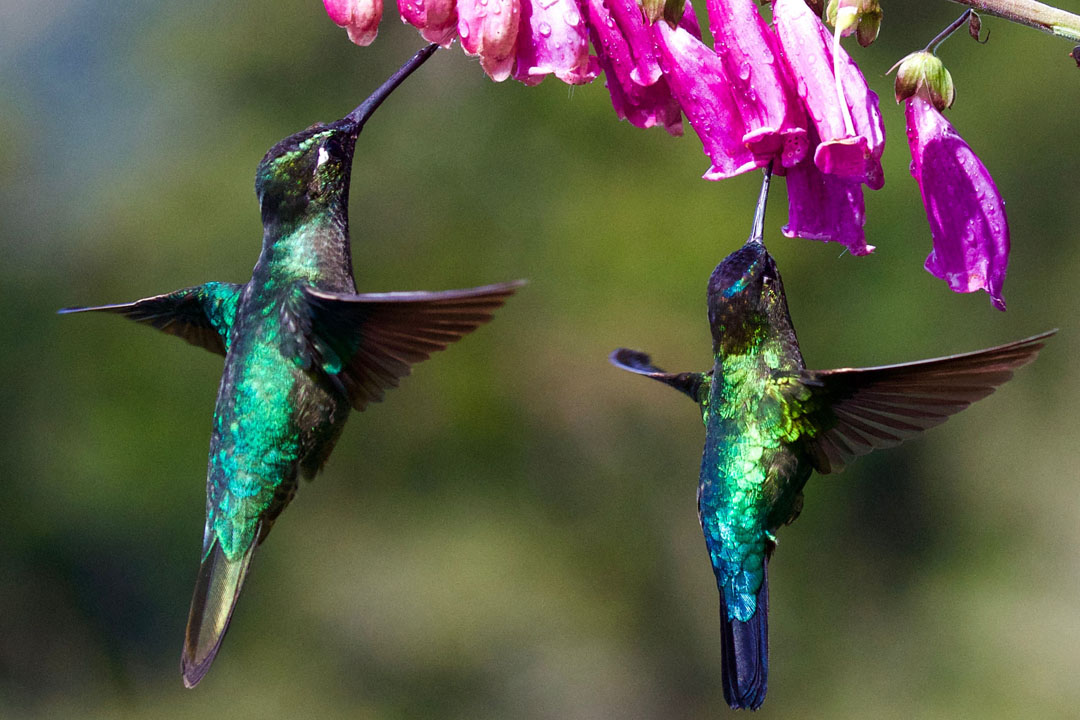
Hummingbirds prefer long, cylindrical flowers
Plant for year-round blooms
If you plant flowers that bloom during different parts of the year, the hummingbirds will know that your yard is always a good option for food sources. Plus, it means that your yard or garden is always full of color.
Using native plants is a good idea if you want to encourage hummingbirds to visit your yard. Native plants attract native bugs, which are the preferred diet of these speedy flyers. If possible, refrain from using pesticides in your yard, as that will not only eliminate a food source for the hummingbirds but if they eat bugs that have been contaminated with pesticides, they could die themselves.
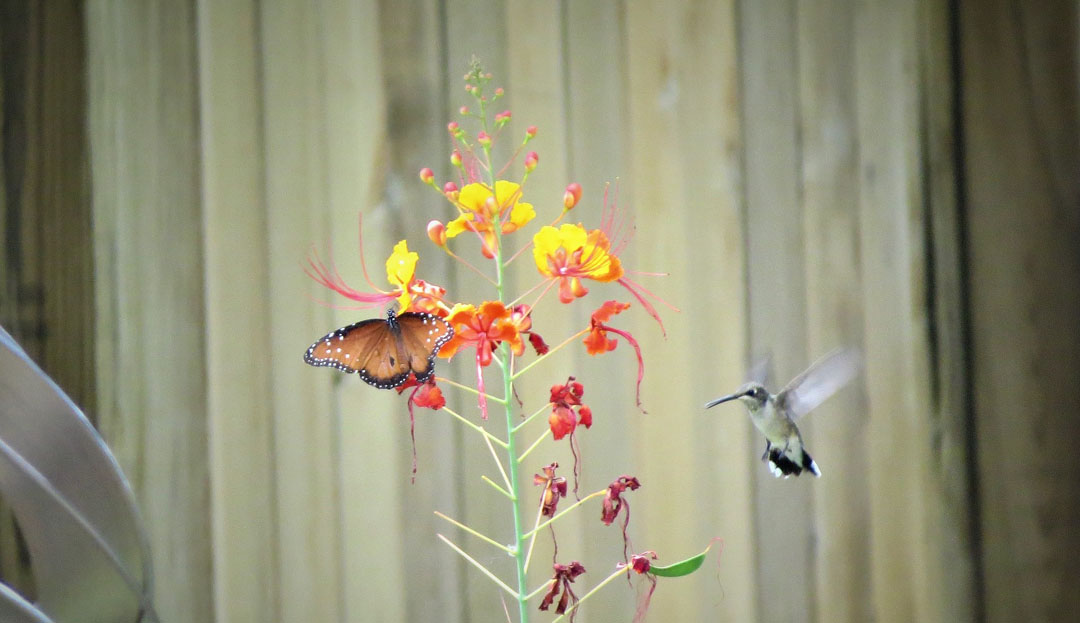
A butterfly and a hummingbird visit a Mexican bird of paradise, helping to pollinate it
Don’t like spiders? Hummingbirds love them – and not just for food. Hummingbird nests are partially composed of spiderwebs. This allows the nest to expand as the baby birds grow. If you think of spiders as a hummingbird magnet, maybe you’ll like them more.
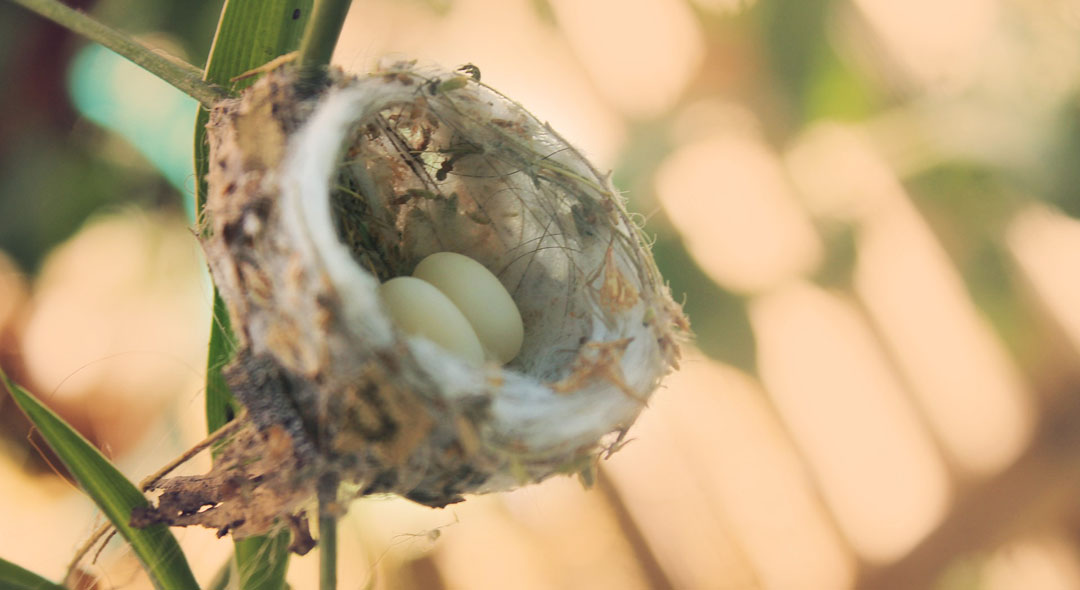
Hummingbirds often use spiderwebs to build their nests
Suggested plants
Check out this list of 14 plants to bring hummingbirds to your yard from the Arizona Daily Star (which contains excerpts from the book “Hummingbird Plants of the Southwest” by Marcy Scott), or this selection of hummingbird plants from your garden from the Tucson Audobon Society. For a longer list and more details, follow the links on the Southern Arizona Hummingbird Wildflowers and Plants page.
Most local plant nurseries will be able to point you to some local plants that hummingbirds prefer, so don’t be afraid to ask. Sometimes they are even labeled as such!
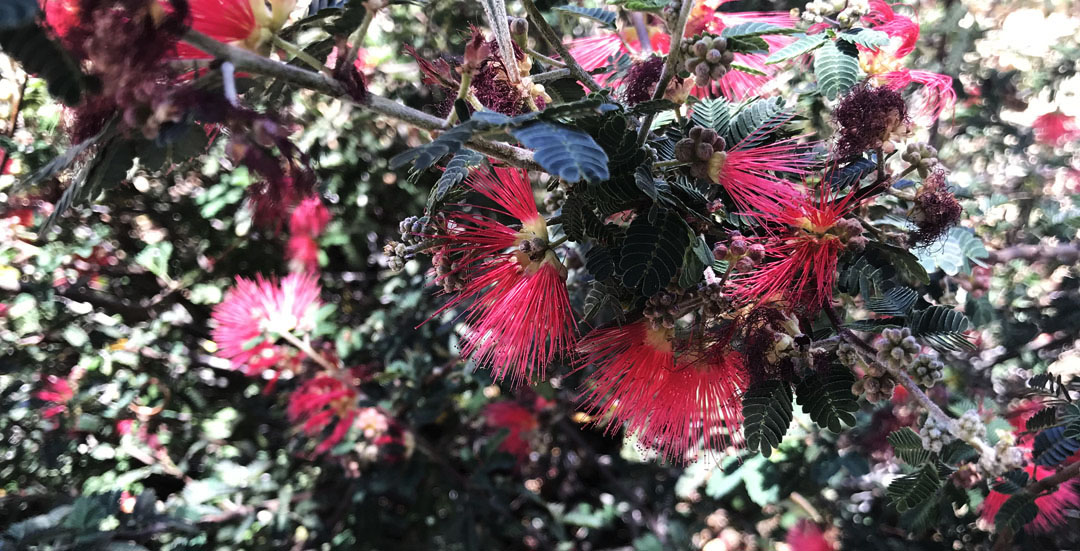
Hummingbirds like fairy duster plants
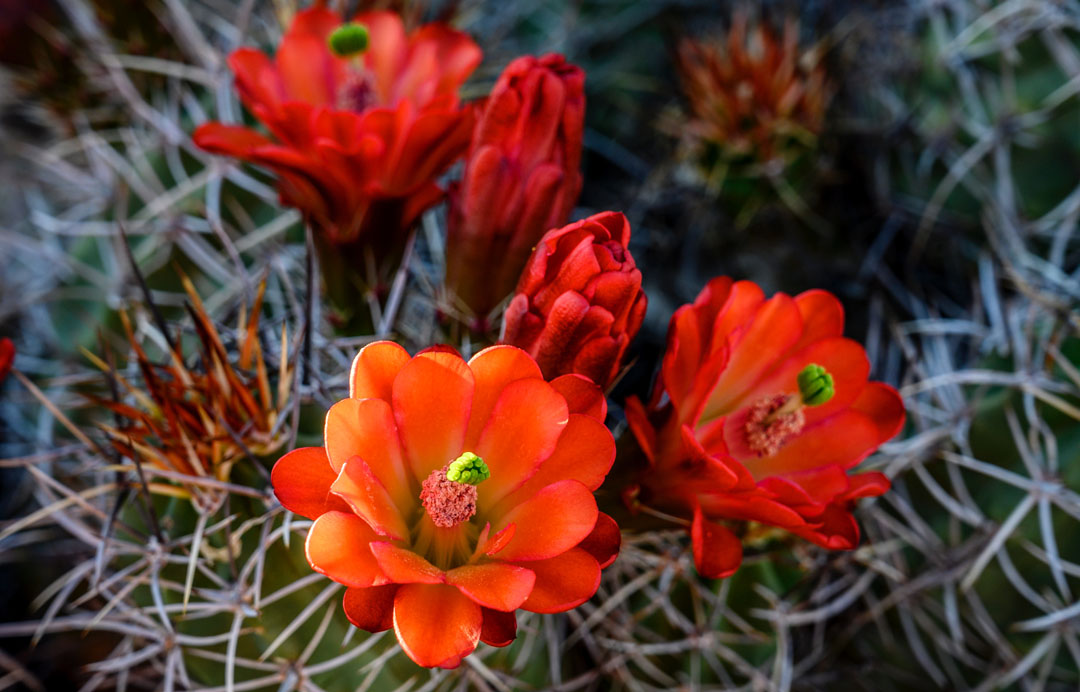
Hummingbirds are the main pollinators of the claret cup cactus (also called king cup cactus or Mojave mound cactus). The hummingbirds have to stick their entire head in the flower, so they often emerge covered in pollen!
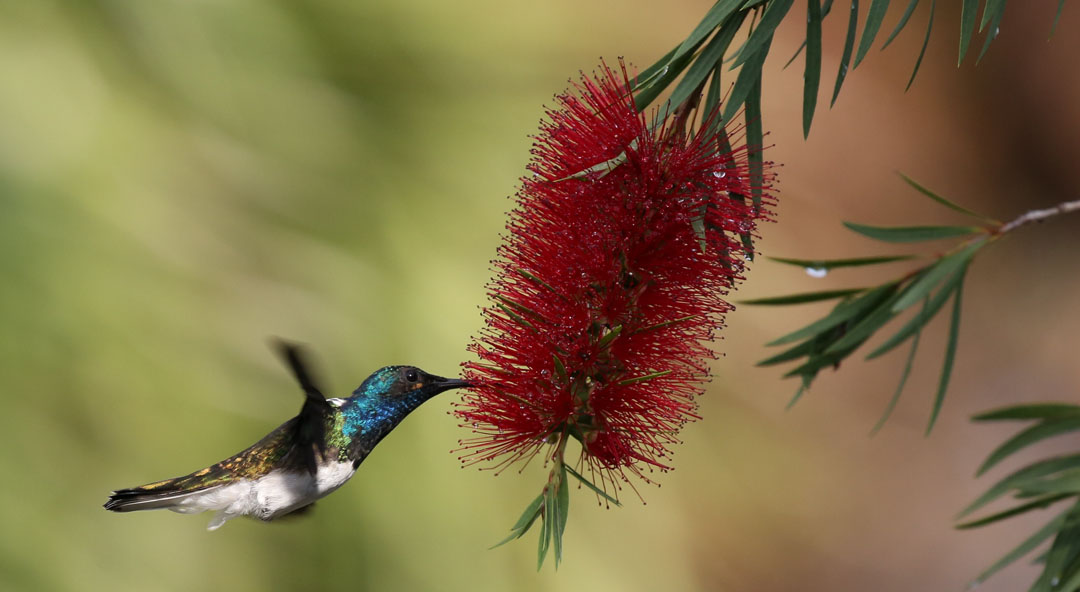
A hummingbird visits a bottle brush bush (say that five times fast!)
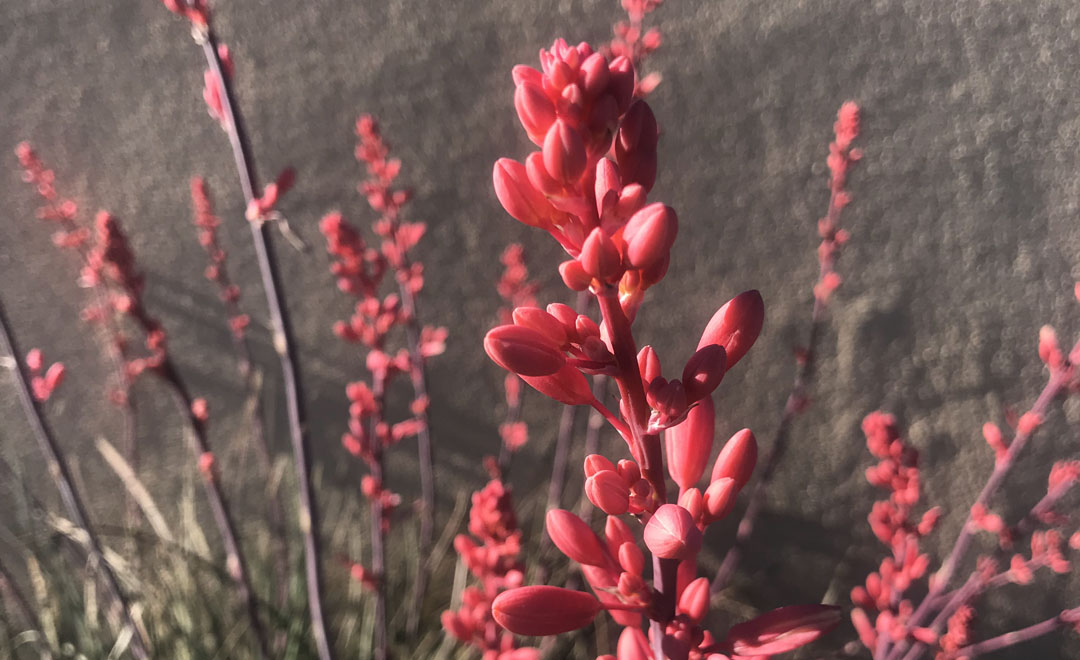
Red-flowered yucca is another hummingbird fave
Other considerations for a hummingbird habitat
If you want hummingbirds to visit, providing food sources should be enough to prompt them to stop by your yard. But if you want to provide a true habitat for them, they will also need water, privacy for nests, and an area of open air to survey their territory. Shrubs and trees give them places to build nests and to perch, and some native shrubs and trees also grow flowers that hummingbirds enjoy. The desert willow, for example, produces long purple or pink flowers in the spring.
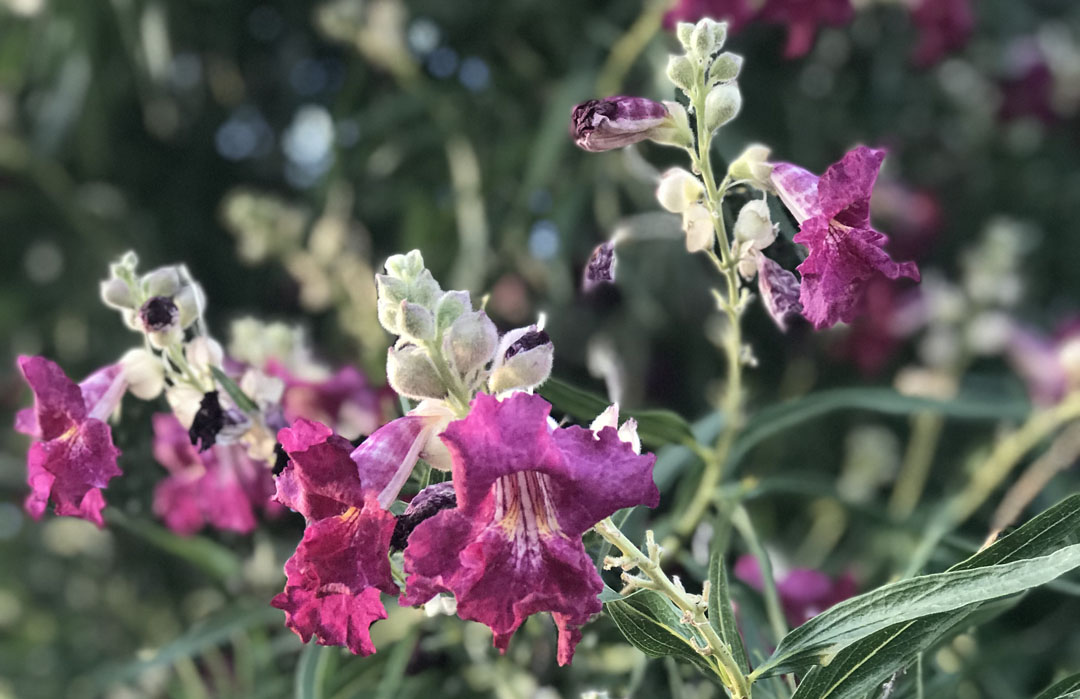
Hummingbirds have been known to like the pollen from desert willow flowers
Pros and cons of hummingbird feeders
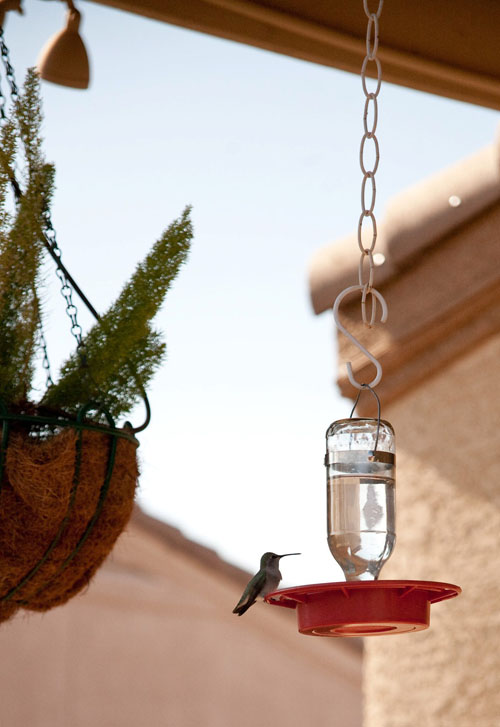
A hummingbird rests on a feeder in a Tucson-area backyard
Should you include a hummingbird feeder in your yard? Hummingbird feeders are found in many yards throughout Tucson and southeastern Arizona. In some ways, they are an easier way to attract hummingbirds, but they can be more difficult to maintain than native plants.
Pros of a hummingbird feeder:
- No garden knowledge needed
- Can hang one up and (hopefully) attract hummingbirds immediately
- You can (somewhat) easily make and store nectar – find a recipe here
- A red-colored feeder might attract the hummingbirds
- The perch gives them a place to rest
Cons of a hummingbird feeder:
- A feeder has to be maintained, refilled, and cleaned regularly
- Mold can develop quickly in the nectar, which can harm or kill the birds
- It attracts bees, insects, and other animals (squirrels love them, for instance)
- Hummingbirds need more than nectar to survive
- Two species of bats in the Tucson area visit hummingbird feeders – so you might wake up in the morning and find all of the nectar gone
- Store-bought nectar sometimes contains preservatives and dyes, and homemade nectar can go bad
- If it is not consistently filled, hummingbirds may not return
- Some hummingbirds can get territorial of the feeder and fight off other birds – especially if there aren’t a lot of other food options
Whether or not you include a hummingbird feeder in your yard is entirely up to you!
Tucson-area hummingbird attractions:
Southern Arizona is known as a hotspot of hummingbird activity, and we have plenty of local resources and opportunities to spot them. We get both the migrating hummingbirds that travel south each winter and the local Mexican and Tucson varieties of hummingbirds that spend all year here. Whether or not you have hummingbirds showing up in your own yard, here are a few places to visit to have an unforgettable hummingbird experience.
Hummingbird Banding on the San Pedro River
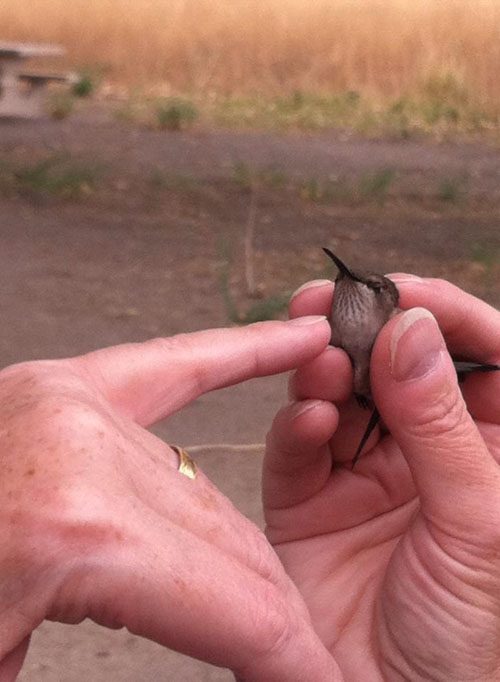
A San Pedro volunteer points out the markings on a hummingbird before it is released
I visited this a few years ago, and haven’t stopped talking about it since. Volunteers and staff capture hummingbirds for a minimal amount of time so that they can track migratory and lifespan patterns, amongst other things. While I was there, some birds had returned and were several years old. Others had never passed through Sierra Vista before and were fitted with a tiny numbered band.
There’s more information about the banding process on their website, but my favorite part of the day was when the birds were released after the volunteers had documented what they needed to and had given the birds a drink of sugar water. Instead of immediately releasing the hummingbirds, visitors got to play a part. You stood with your hand outstretched and flat, and a hummingbird would be carefully placed upon it. Most flew off immediately, but some would hang out on a hand for a few seconds or minutes before continuing their journey. We were told that if a hummingbird peed on you, it was good luck. I must be very lucky.
Banding takes place in April, May, July, August, and September. Find more information about visiting at the Southeastern Arizona Bird Observatory website.
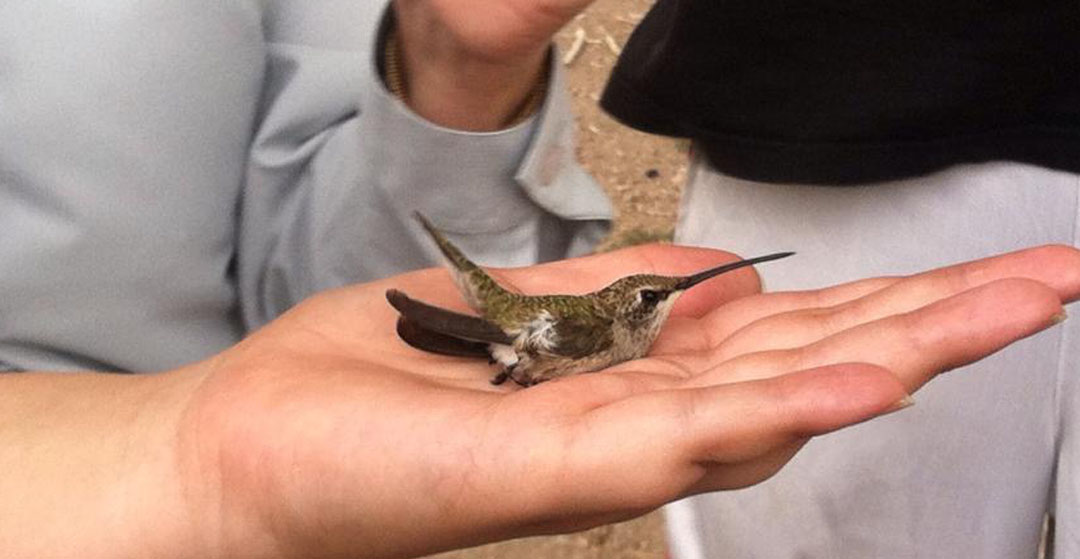
They say a bird in the hand is worth two in the bush. I got to experience that first-hand (no pun intended) at the San Pedro Riparian National Conservation Area, near Sierra Vista
Arizona-Sonora Desert Museum Hummingbird Aviary
Hummingbirds are rehabilitated in this walk-through aviary located at the Arizona-Sonora Desert Museum. You can get a close look at several types of hummingbirds as they rest on tree branches, build nests in shrubs, drink water, and basically ignore all of the humans walking around. On the outside of the building is a poem about spiders and a picture of a hummingbird nest – when the building was renovated, the spiders were accidentally removed and the museum staff noticed that the hummingbird nests were falling apart. Spiders (and their webs) have been reintroduced to the aviary, and the hummingbirds use plenty of spider webs to craft their nests.
More information is available at the Arizona-Sonora Desert Museum website.
Other Hummingbird Experiences
Next time you travel to Patagonia, stop by Tucson Audubon’s Paton Center for Hummingbirds. Or if you don’t want to drive that far, you can always see some of the birds on their live webcam.
Madera Canyon, about an hour drive south of Tucson, has three different hummingbird feeding stations.
Want to be part of gathering information about hummingbirds? Participate in the Tucson Hummingbird Project (closed until March).